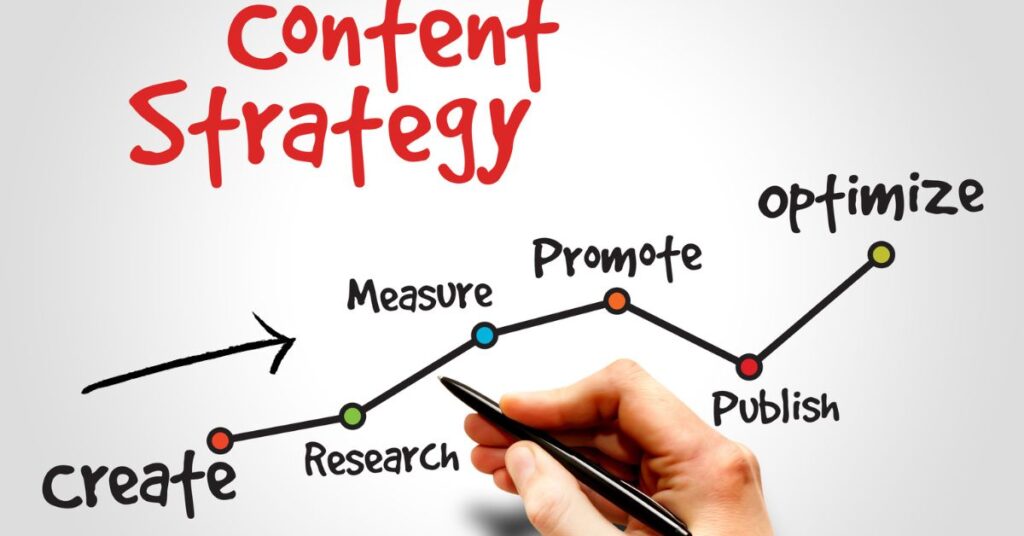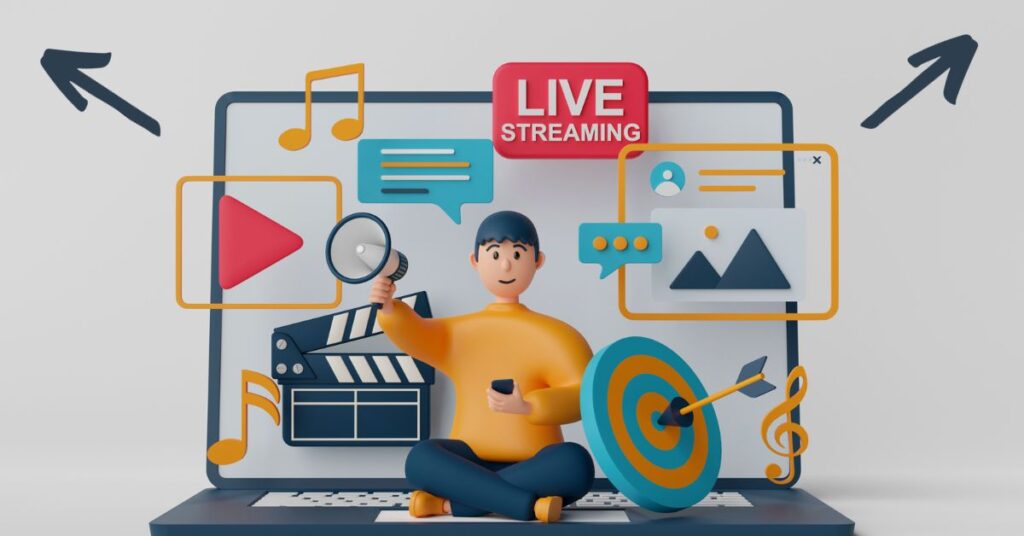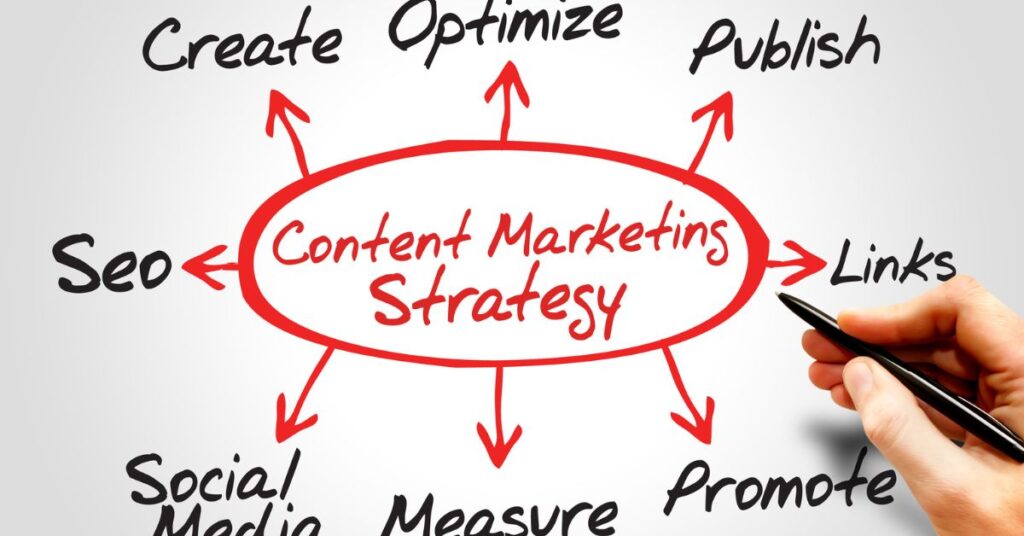When it comes to generating income, content marketing is the process of producing and disseminating relevant and high-quality information to attract and keep a specific audience.
With the rise of digital media and social platforms, content marketing has become an extremely effective way to reach consumers who have grown distrustful of traditional advertising.
Unlike outbound marketing, content marketing does not actively advertise a brand’s goods or services. Instead, the goal is to deliver exciting and helpful information based on the users’ interests. By responding to their inquiries and demands and gradually building their awareness and affinity for the brand, the objective is to nurture prospects and leads.
Deeper buyer-seller relationships, increased brand loyalty, less customer acquisition expenses, and more predictable sales pipelines are all made possible by effective content marketing. However, it necessitates strategic execution and forethought. These seven steps provide a tried-and-true framework for implementing an effective content marketing program:
Determine Your Goals

The first step in a content marketing strategy is to clearly define your goals. What are you hoping to achieve through content marketing? Common goals include:
Clearly defining your goals will dictate the types of content you produce, distribution channels you use, metrics you track, and how you measure success. Avoid trying to tackle too many disparate goals at once. Prioritize 1-3 primary goals to focus your efforts. Revisiting your goals periodically allows you to refine them over time.
Identify Your Target Audience

Conducting research and determining your target audience before producing any content is essential. Examining demographics such as age, gender, geography, income level, education, and more is necessary to decide your target audience. However, you must also delve further to comprehend their objectives, difficulties, interests, and drives.
Some key questions to ask:
There are a variety of research methods to employ:
Clearly defining your target audience makes it much easier to create content tailored specifically for them. Take time upfront for thorough audience research and analysis. It will pay off greatly when you are able to craft content that truly resonates with their needs.
Create A Content Strategy

A content strategy is key for mapping out the types of content you will create and how you will distribute it. This involves:
You are determining the format of your content – blog posts, ebooks, videos, podcasts, etc. Variety is essential for keeping your audience engaged across different mediums.
Mapping the customer journey to understand at what stages different content will be most effective. For example, an ebook may be better for the awareness stage, while blog posts work for retention.
Develop personas so you can tailor content to your target audiences. Content should resonate and provide value for each persona.
It is setting a content production schedule to maintain consistency. Aim for a regular cadence of publishing that is sustainable.
You are identifying distribution channels to get your content in front of your audiences. This may include your website, social media, paid ads, email newsletters, guest posting opportunities, etc.
They are leveraging promotions, email marketing, and social sharing to distribute content beyond organic reach actively.
Carefully organizing your material’s themes, forms, and distribution can guarantee that you have a solid foundation for an effective strategy. Consider where your target viewers spend their time, and then organize your material correctly.
Produce Engaging Content

Producing high-quality, engaging content is a critical step in content marketing. The objective is to provide content that not only offers your readers something of value but also motivates them to take action. Here are some tips:
Optimize content for the audience. Understand your target readers and create content tailored specifically for them. Address their pain points and interests.
Use different formats and styles. Mix up blog posts, videos, infographics, ebooks, and more. This variety keeps things fresh and appeals to different learning styles.
Make your content entertaining and informative. Find ways to engage your audience so they keep reading or watching. Include interesting facts, stats, examples, and stories. Use humor when appropriate.
Optimize content for the audience. Understand your target readers and create content tailored specifically for them. Address their pain points and interests.
Focus on interaction. Encourage comments, shares, and discussion around your content. This builds community and increases reach.
Optimize content for the audience. Understand your target readers and create content tailored specifically for them. Address their pain points and interests.
Creating remarkable content takes time, strategic planning, and a willingness to experiment. But high-quality, engaging content that resonates with your audience is worth the investment.
Promote and Distribute Content

Once you’ve created high-quality, valuable content, you must effectively promote and distribute it to reach your target audience. There are several key strategies for content promotion:
Leverage social media: Sharing, tagging, and sponsored advertisements effectively promote your content across all media. Inspire your audience to spread the material further inside their networks.
Email marketing: Send emails or newsletters to your subscriber list highlighting your new content. Segment your list to target the most relevant people.
Search engine optimization (SEO): Optimize content with target keywords so it can be easily found on search engines. Focus on crafting meta titles, descriptions, alt text, and more.
Paid advertising: Invest in paid ads on platforms like Facebook, LinkedIn, and Google to further amplify your content reach. Target your ads to your ideal audience.
Influencer marketing: For them to share your material with their audience, you should ask appropriate celebrities or industry experts to do so. Make changes for guest posting available.
Webinars/events: Discuss or showcase your content during webinars, podcasts, or live events. These are great opportunities to present your content.
It’s also essential to make your content as accessible and shareable as possible. Ensure it’s mobile-friendly, easy to scan, formatted well, and shareable on social media. UseCalls-to-Action to encourage shares, downloads, sign-ups, or purchase
Content Marketing Measure Results

One of the most important steps in content marketing is measuring results and tracking your performance over time. This allows you to understand what content resonates with your audience and achieve your goals more effectively.
You’ll want to establish key performance indicators (KPIs) and metrics at the outset to determine the success of your content marketing strategy. These may include:
Analytics tools are essential to monitoring your metrics. Your website should implement Google Analytics to track unique visitors, page views, bounce rate, and more. Google Analytics will also show you referral traffic to see which content drives the most visitors.
Social media sites with post-engagement data include Facebook and Twitter. Campaign click-through and open rates can be obtained through email marketing software. Lead generation and sales can be tracked using your CRM.
Evaluate performance at regular intervals, like once a month. Examine patterns across time. Find out which subjects and forms work best. Find any underperforming content and improve it, or try something different.
Reallocate resources to high-performing content by using your insights. Experiment with other formats and themes that will interest your audience. Additionally, keep testing new content to see what else might work.
Measuring and optimizing over time is critical to creating an effective, results-driven content marketing strategy. The right metrics will show you what content delivers value and achieves your goals.
Refine and Improve
The key to successful content marketing is optimization and iteration. You need to constantly refine your strategy and improve your content based on data and insights. Here are some tips:
The most successful content marketers are agile and willing to make changes based on data. They don’t get attached to one format or topic. Instead, they double down on what works and swiftly optimize or eliminate what doesn’t. Continuous refinement is critical to creating a content marketing strategy that delivers results.
Maintain Consistency
When it comes to developing an efficient content marketing plan, consistency is of the utmost importance. It is necessary to create a consistent strategy for generating content and to publish fresh material to see outcomes.
Aim to maintain a consistent publishing calendar daily, weekly, or monthly. If you stick to a schedule, readers will come to expect and wait for your new content. Aim for consistency, not perfection – consistent expression is better than sporadic periods of inactivity.
Creating an editorial calendar might be of use to you in terms of planning and organizing content.
Check out upcoming events, seasons, or trends that align with your business. Brainstorm content ideas and coordinate with your team to ensure everything is transparent in your calendar.
Work to generate new ideas and continually repurpose content where possible. Search trends and stay on top of current events to spark content inspiration. Maintain momentum by having your next piece ready as soon as you hit publish on the latest one.
Consistency shows readers you are committed to regularly creating content with value. You will increase discoverability and traffic over time by publishing on a set schedule. With a consistent content marketing approach, you can build authority and trust with your audience.
Conclusion
Content marketing can benefit any business looking to attract and engage with customers. Following the seven key steps, you can develop an effective content marketing strategy.
First, determine your goals so you know what you want to achieve. Identify and get to know your target audience, as creating content specifically for them is vital. Come up with a documented content strategy and editorial calendar to map out what content you will create and when.
Produce high-quality, valuable content tailored to your audience that entertains, educates, or helps them. Promote and distribute this content through your owned channels and external platforms where your audience is active.
Continuously measure your results so you can refine and optimize your strategy. Maintain consistency with creating and sharing content over time, as content marketing requires an ongoing commitment to see the full benefits.
When it comes to content marketing, getting it correctly may make a huge difference. By doing so, you establish credibility and trust with your audience.
You increase awareness and visibility for your brand in organic search and across channels. You generate traffic and leads from interested prospects seeking your expertise and solutions.
Most importantly, you engage your audience and turn them into loyal customers. You gain a decisive competitive advantage through effective content marketing by mastering these seven steps.


1 comment
[…] The secret to blogging success is to constantly create high-quality material that adds value to readers. Blogging may become a substantial source of revenue, but it takes time to establish authority and an audience. […]